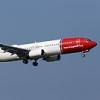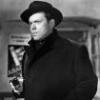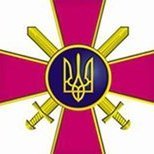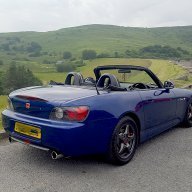Search the Community
Showing results for tags 'Venom'.
-
MikroMir is to release 1/48th de Havilland DH.112 Venom kits. Source: https://www.facebook.com/mikro.mir.dnepr/posts/3970369419707431 First 3D renders V.P.
- 82 replies
-
- 16
-

-
DreamModel is to release a 1/72nd Bell UH-1Y Venom - USMC - ref. DM720018 Source: https://www.facebook.com/DreamModelOfficial/posts/2324739567656623 Box art V.P.
- 17 replies
-
- 4
-

-
- UH-1
- DreamModel
-
(and 1 more)
Tagged with:
-
My latest off the production line Revell 1:32 Sea Venom as FAW.53 from HMAS Melbourne 724 NAS 1962. Not a bad model but shows it’s age in lacking the fine detail of modern kits and assembling the engine into the fuselage was a right pain. But I’m pleased with the result and must thank @NAVY870 for the helpful posts, pics and assistance. I’d already decided to go Australian but the help of @NAVY870 just reconfirmed that decision.
-
For the sake of clarity and after the release of the Kitty Hawk Bell AH-1Z Viper (http://www.britmodeller.com/forums/index.php?/topic/234943269-148-bell-ah-1z-viper-super-cobra-by-kitty-hawk-released/) I've decided to open a new dedicated thread for the future KH 1/48th Bell UH-1Y Venom - ref.KH80123 Source: http://scalemodels.ru/news/6428-vertoletnye-anonsy-Kitty-Hawk-Models-1-48.html Source: http://www.arcforums.com/forums/air/index.php?showtopic=276651&view=findpost&p=2627492 V.P.
- 16 replies
-
- 2
-

-
- Kitty Hawk
- UH-1
-
(and 1 more)
Tagged with:
-
Seen at the All Japan Model & Hobby Show 2013, a poster announcing a 1/72nd de Havilland DH.112 Venom NF.3 kit by Dragon/Cyber-hobby - ref. 5116. Source: http://www.1999.co.jp/eng/blog/1310182 V.P.
-
Hello everyone. I continue show my old models. Today this is De Havilland Venom from Classic Airframes. This model was build four years ago. Best regards. Michael.
-
The Venom started life as as the Vampire Mk 8, a thinner winged development of the Vampire with the original Goblin engine replaced by the more powerful Ghost. It first flew in September 1949. I’m not really sure how I came to be doing this project. I’m 76 and well aware that my declining faculties will be probably prevent me from finishing all the interesting prototypes and experimental a/c already in my stash, let alone the stream of Russian ones coming from Modelsvit. The Venom was not even on my radar as it did not seem to fit any of those categories. To me it didn't seem to be a particularly interesting or distinguished a/c. The only explanation I can offer is that earlier in the year there was a thread asking why there was no kit of the single-seat Venom and that whetted my interest as I like having something that nobody else has. At the same time an Aeroclub kit appeared on Ebay so I thought that I could whiz that together and it ‘would do’. Oh how we laughed! It’s taken most of the summer, albeit at a slow pace due to other seasonal activities. Venom_2017_08_21_31 by johnrieley, on Flickr Venom_2017_08_21_15 by johnrieley, on Flickr Venom_2017_08_21_33 by johnrieley, on Flickr On building, the first step was to remove most of the aerodynamic ‘bodges’ added to get it to fly right. This was made more difficult by the paucity of information about it. Having an ex-Swiss Venom up the road at Gatwick was a help but inevitably you need to know more as construction proceeds but at £7.50 a visit plus transport costs makes one a trifle reluctant to use this option. Next problem was that I could not get the booms to look right and ending up removing and refitting them slightly further outboard which then meant that the blisters over the u/c had to be replaced. Incidentally the top surface of the boom on the a/c is not straight. There is a slight hump which runs from the front to just aft of the wing. Vanes were added to the intakes and openings made for the air-conditioning (I think) inlets outboard of the intakes. The remaining major problem was the canopy and its fitting to the rails. I think that the canopy must have a straight section at the base which allows the canopy to slide along the rails. I could find no hard information on this and my Gatwick Venom had the canopy removed and the cockpit area covered. The decals for the lettering were produced at home. An unresolved item is the size and shape of the mass balances under the tailplane. Another unresolved item concerns the outer u/c doors. Some pictures indicate a slight bulging but I have been unable to ascertain the actual size and shape. Any help with those two items would be appreciated. The a/c was, I am told, painted in high speed silver. The model was finished by priming with Tamiya silver primer with a top coat of Alclad Klear Kote Gloss. All C & C welcome, particularly about anything I have missed or got wrong. John
- 12 replies
-
- 23
-

-
1/32 Matchbox Sea Venom (one and a bit kits), which will be completed as a Flygvapnet (Swedish Air Force) J 33 Venom (N.F.51). Derek
-
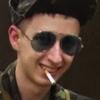
CMR 1/72 DH Venom FB.4, WR444 (op.Musketeer)
adlersieg posted a topic in Work in Progress - Aircraft
Hi folks. I wanna start my first WIP here on britmodeller with CMR#189 1/72 DH Venom FB.4, WR444. Any help and feedback will be appreciated. Here is a profile of the a/c mentioned in this topic: Pity, but I cant find any photo of this a/c so there is a lot of questions. But let's keep' em for future, now i wanna tell you few words about the work done. I got this kit in built condition, but I wanna rebuilt it because of inaccurate panel recessing. I got started from the filling panel recessing with the putty, for now about a half of the plane has already sanded. Here we are. Meanwhile I'm drawing the patch with the panels and hatches to be etched as I can't rescribe them well. -
de Havilland Venom NF.3 WX905 on display at Newark Air Museum. Pics mine.
-
Afternoon All, I recently acquired the Aeroclub 1/72 De Havilland Venom FB1 and FB4 kits with the intention of building them as RAF machines from 249 (FB1) and 28 (FB4) Sqdns. I'm looking to see if anyone has some decent cockpit interior images so I can add some detail to the cockpit interiors? Anything you can provide me with would be gratefully received! Thanks in advance, Mark.
- 15 replies
-
- De Havilland
- Venom
- (and 5 more)
-
Here's my latest, the Kittyhawk 1/48 UH-1Y Venom, coming soon to a SAMI near you!
- 26 replies
-
- 35
-

-
Hi all, I did this for the FAA group build, probably wouldn't have been my preferred choice as its not really my scale (nowhere to put the thing for starters!), but was chosen from a list of possibilities! Built OOB apart from some quickboost seats which are not quite the right mark, but look loads better than the kit seats and a bit of amertuerish scratchbuilding on the wingfold! Decals were a nightmare, very translucent and had a layer of scum on the back, had no choice but to do the best I could with them. As always notice some bits that need touching up after photographing it but anyway here it is... 894 NAS HMS Albion 1960 cheers Simon
-
UH-1Y "Venom" 1:48 Kitty Hawk The Bell UH-1 Iroquois or "Huey" to the majority of people is probably one of the most recognisable Helicopters in the world due to the exposure it had from the Vietnam war. Developed by Bell Helicopters back in 1952 to a US Army requirement for a utility and medical evacuation Helicopter, it first flew in 1956. The Huey was the first turbine powered helicopter to enter production for the US military in 1961. At the time the US Army designation was HU-1, which would later be changed to UH-1. Hu-1 giving rise to the nickname which has stuck ever since of "Huey". The US Marine Corps seems to stick to a "if its not broke, don't fix it!" approach to procurement for a lot of items. They were a leading proponent of the Second Generation Harrier. They did not follow the US Army in replacing their Cobra Gunships with Apaches; they stuck with a modernised twin engine Cobra, the AH-1J, to be followed by the AH-1Q SuperCobra and now even the AH-1Z Viper. They also have kept the venerable UH-1 in the form of the twin engine UH-1N. In 1996 the USMC began a programme with Bell to develop the UH-1Y. The UH-1Y or "Venom" would feature a bigger cabin, four blade main rotor and more powerful engines. Initially the UH-1Y was to be re-built UN-1Ns, however in 2005 the airframe was approved for new production. The Y model aircraft would feature a leap forward from the N which had grown a bit bloated in upgrades over the years. The new helos feature an all glass digital cockpit with a modern FLIR. The uprated engines (GE T700) and four blade rotor will return the UH-1Y to the utility role again. The new rotor blades have been designed to withstand up to 23mm rounds. Overall improvements give the new helicopter a 125% increase in payload, with a 50% greater range. A higher cruising speed and less vibration will also help with crew fatigue. The first UH-1Ys were delivered in 2008 with the USMC scheduled to receive 160 by 2016 to replace all of their N models. The new Hueys have so far been combat proven in Iraq and Afghanistan where they typically fly in conjunction with the SuberCobra. A deadly Bell team if you happen to be on the wrong side of them! The Kit The kit arrives in a well packed box. Like other Kitty Hawk kits I have seen some of the sprues for this one are bent over while hot This runs the risk of damaging parts when the modeller goes to separate them. A box protects the clear sprue, and there is a small photo-etch sheet. Construction starts with the main cabin. The pilots centre console is added, the instruments on this are provided as decals. The two front seats build up from six parts each. The armoured sides are handed so take care to use the right (or left!) one. The centre housing in the cabin is the next part to be constructed. Seven seats are then made up to attached to the centre. Following this two equipment racks are constructed which fit behind the pilots. Each of these has a seat which attaches to the rear. Construction then moves to the cabin roof. The overhead instrument console is added. Once in place the cabin roof is joined to the main cabin part by a rear bulkhead and two side parts. Next the engines are constructed and placed into 5 part engine bays (one for each side). Once the bays are complete they are added to the airframe side parts. Once this step is complete the side parts are closed up around the main cabin. The lower nose of the helo is the next stage of construction. The windows are added to the floor part and then the upper & lower nose parts can be joined. There are a couple of photo etched grills to add to the nose and the aerials (though I suspect most modellers will leave these until last). Once the nose is complete the modeller can move onto the transmission housing. This is of left & right construction with a circular top part. Various photo-etch and plastic parts add grills and intakes to this area. Construction then moves back to the main part of the helo. The area on top of the cabin with the intakes is added in front of the engine housings. The main cabin doors have their glazing added before going onto the main body (though again I suspect these will be left until the end). The nose is then added, along with the main windscreen and the top transmission housing. The engine exhausts complete with photo-etch grills are completed and added to the rear of the engine section. The Engine covers can then be added at this point. They can be left off to expose the engines as needed by the modeller. The front cabin doors are then added along with aerials, windscreen wipers and cable cutters. We then move to the underside of the main cabin. The landing skids are added along with more aerials and airframe fittings, not forgetting the FLIR turret. This then completes the main body. The tail boom sections (left & right) are joined together. The tail planes, tail rotor housing, and the tail rotor are then added. The last touches are to add the tail assembly to the main body, and complete the main rotor assembly. The main rotors attach with upper and lower parts to a central core so this should provide a strong join. The final parts to be added are weapons. A weapons station is provided for each side. Forward firing rocket pods can be used along with door guns. A minigun or .50 cal machine gun can be used on each side. Clear Parts It is welcome that Kitty Hawk put all the clear parts in there own box to protect them. Decals A main decal sheet gives most of the four decal options. A smaller sheet giver you the instruments. 168402 No.6 HMLA-169 USMC. 169406 HMLA-167 Warriors USMC. 8088 US Marine Corps. 168427 HMLA-269 USMC. The decals are well printed, in register and colour dense. It is frustrating that there is virtually no information on the decal options provided. It is noted that the decals for 168402 were selected early on in the development of the kit. Unfortunately in January 2015 this Helicopter crashed in a training accident. Both crew members Maj Elizabeth R Kealy (Peaches), and Capt Adam C Satterfield (Chief) were killed in this accident. Kitty Hawk have left these markings in the kit, and dedicated the kit to all who have paid the ultimate sacrifice. Conclusion This is a great new tool kit of an important helicopter for the USMC and the latest generation of the "Huey". Helicopter modellers have been waiting for new tool kits like this and they wont be disappointed. Highly recommended. Review sample courtesy of and available soon from major hobby shops
- 13 replies
-
- 3
-

-
One of the benefits of volunteering at Classic Air Force is the opportunity to photograph visiting aircraft as well as the museum residents. Here is a selection taken during the last few months. None of these were taken 'airside', they were taken from public areas often using my trusty stepladder.
-

New Digital Decal Releases from Oldmodels Decals
Oldmodels Decals posted a topic in The Rumourmonger
Totally New: Air New Zealand B777-219ER 2013 Trademark scheme 1/144 and 1/200 RNZAF Sunderland MR Mk V 1950s / last scheme in 1/48 RNZAF Venom FB1 in 1/32 Now available in Digital format: Air NZ B737-200 NAS delivery and NAR interim schemes in 1/72, 144 and 200 Air NZ F27-500F NFD and NFE delivery schemes in 1/72 and 1/144 DC3s - Ministry of Transport, James Aviation (now in 2 schemes), and Pionair in 1/48, 72 and 144 Air National Dash8-100 in 1/72 and 144 Air Chathams and Air Freight NZ CV580s in /172 and 144 DC-3 Warbird ZK-DAK in 1/144 (previously only in 48 and 72) RNZAF UH-1D/H Iroquois – all schemes are now available in 1/35, 48, 72 and 144 RNZAF Bell 47-G Sioux – all 12 schemes now available in 1/32, 35, 48 and 72 RNZAF AESL Airtourer T6, CT-4B Airtrainer, CT-4E Airtrainer – all schemes now available in 1/16, 48 and 72 RNZAF 75th Anniversary supplementary decal sets – C130H in 1/48, 72, 144 and 200th and CT-4E in 1/48 and 72 RNZAF TAF P-51D Mustangs in 1/24, 32, 48, 72 and 144. All available through my website www.oldmodelsdecals.com John Oldmodels Decals -
De Havilland Venom NF.2 1:72 Czech Master Resin The Vampire was infamously characterised by its unorthodox twin boom layout. Being the second jet fighter to enter into RAF service after the Meteor, it set several records early in its existence and went on to serve in no less than 31 air forces. The Venom was a natural evolution utilising a thinner wing and more powerful engine to increase performance. There were two basic configurations, the single seater being a fighter bomber, where as the two seat machines had a cockpit layout based on that of the proven Mosquito providing all weather intercept capability. The radar operator sat slightly rear wards and to the right of the pilot with the radar set in front of him. The side-by-side arrangement was popular with crews as it offered good team spirit and the ability to still communicate in the event of an intercom failure. The first two seat variant to enter service was the NF.2 in 1953, however structural weaknesses in the wings near the tail booms led to several crashes in 1954. After a temporary grounding, service resumed with restrictions until the issues could be resolved. The NF.2a followed and featured several refinements including a clamshell canopy offering improved visibility and redesigned tail section to reduce buffeting at high speed. The final two seat variant was the NF.3 which entered service with 141 and 23 Sqn based at RAF Coltishall in the summer of 1955. Because at this stage the RAF had chosen the Javelin as the replacement all weather fighter, improvements to the NF.3 were limited, the main benefits being an improved Ghost 104 engine, APS-57 Airborne Intercept radar and radar-ranged gunnery. The performance of the later Venoms was superb, practice intercepts on Canberra’s flying at 550mph and over 40,000ft were achieved. Armament was a four pack of 20mm cannon in the belly. By the end of 1957, Javelins had replaced Venoms as front line aircraft. Incredibly, Venoms continued in military service until 1983 with the Swiss Air Force, one of 6 foreign operators of the aircraft. The Kit The latest in the Vampire / Venom series from CMR is the NF.3. The lit comes in the usual sturdy white box with simple but striking side profile image of the aircraft on the front. Inside, you find a full resin kit of 55 parts supplemented by two sheets of etch, two vac formed canopies and a paint mask for the canopy. The instruction pack has 6 pages of b&w photographs of the aircraft both in full and close up to aid your build. The polythene bags housing the delicate resin parts are sealed into small compartments to reduce the risk of damage. If you’ve built any of these before, CMR have recently started to supply the wings with the intakes already formed in place. Assembly starts with the cockpit interior. Having built the NF.2 a few months ago, this goes together fairly easily and uses a good mix of coloured etch and fine resin components to create a superbly detailed interior. The detail really stands out when using a wash. The nose wheel bay requires a thin flash of resin removing and the bay fits to the inside of the fuselage under the cockpit. A small amount of filler may be required after fitting this to seal any gaps. The assembled cockpit is glued between the two fuselage halves, not before you’ve added a weight. The only real challenge that I’ve come across with these kits is dealing with the seam line down the centre after joining the fuselage up. There is some flash along the seam mating edges that requires sanding off. I’ve had to use filler on both of my previous builds to eliminate the seam, however that might say more about my skill than the kit ! Obviously, being a resin kit, you don’t have location pins, nor can you use Liquid Poly type glue. I tend to hold the two halves together with thin strips of masking tape then run Super Glue along the seam. Surface detail is beautifully formed with very reserved recessed panel lines. Using a modelling knife works well to restore the lines across the filled seams, which I usually do at the priming stage later on. With the fuselage assembled, the wings are fitted next. There is some flash around the wing tip tanks and leading edges, however this sands off with ease. There is some thick resin mould residue that needs to be cut away from the wing roots to allow the wings to mate to the fuselage. I previously used a modelling knife to do this by repetitively scoring the material until it easily snapped off. As with the fuselage, surface detail is superb, but the detail in the main wheel bays and flaps is where you really see the benefit of using resin. They are incredibly detailed and well formed without adding any extra parts. The leading edge intakes each have two etch splitters vertically positioned giving excellent scale thickness. Etch is also used to replicate the wing fences. Tail booms next. On the previous two builds, fitting these was very straight forwards, getting them aligned didn’t present any issues. There's some small amounts of flashflash that will need removing from the mould seams which it's better to do before fitting. With the basic airframe complete, attention turned to the detail, primarily the flaps, undercarriage and various sticky out bits. The undercarriage legs are supplied in a different type of resin that is stronger to prevent them from warping under the weight. I’d recommend fitting the flaps after painting if you are intending to have them lowered because they are quite fragile. Handling the u/c and flaps is quite a fiddly job due to the small size of the parts so don’t try to rush these steps and patience will reward ! The canopy is beautifully thin and surprisingly strong. The moulding captures the slightly blown profile either side of the centre frame which I presume was to increase head height. If you’ve never used a vac canopy before, a great tip is to fill it with blue-tac before cutting from the sheet to retain its rigidity as it comes away. Rather than trying to cut in one go, score the cutting line lightly and repeatedly with a new blade until you break through for best results. Whilst the canopy and wind screen come moulded as one, using the new blade is easy enough to separate them if you want the canopy open. A second canopy is included in case you make any mistakes cutting your first one....as I usually do! When it comes to painting, masks are already supplied pre-cut in the pack. The decals For such a small kit, you get two full sheets of decals, the first with the 4 marking options, the second with over 80 stencils. The print on both sheets is in superb register and very fine. If they are like the ones on the NF.2, they are quite thin so should be handled carefully on application. The schemes included, all wearing the dark green, dark sea grey over medium sea grey are: WX853 of 23 Sqn RAF Coltishall, 1955 WX914 of 89 Sqn RAF Stradishall, 1956 WX849 of 151 Sqn RAF Leuchars, 1955 WX796 of 141 Sqn RAF Coltishall 1955 Conclusion This is a welcome addition to the range of Vampires and Venoms already offered by CMR. They aren’t for beginners nor do they aim to compete on price with main stream options. What you get is a premium kit with everything included to produce a stunningly detailed model without compromise. CMR kits can be purchased through distributors listed on their website linked on the logo below including Hannants in the UK. Review sample courtesy of
-
- de havilland
- venom
-
(and 2 more)
Tagged with:
-
So here it is a kit kindly given to me by a fellow BM member well over a year ago! I have kept looking at it and putting it away as its a bit different to what I'm used too. I'm not planning on starting it till the dragon vulcan b1s are done that said I want to build it this year but I need some advice in the mean time about the nature and methods of such a kit. I know little about the history of the kit but if looks unusual to me The fit it terrible on the fuselarge halfs I could fit my leg in there. The plastic is very sence and feels like resin The vac form canopy scares me as I have never done a vac form So if any of you chaps want to share tips and maybe photos of how I can improve the kit and the interior that would be welcome along with general discussion on variants schemes takes as I love the venom and would like to learn more so ..,, Here she is: She looks cute that's for sure ill probably build my plastyk sea venom alongside too Cheers Rob
- 18 replies
-
- Aeroclub venom fb4
- de haviland
-
(and 4 more)
Tagged with:
-
This is purely coincidental as there currently seems to be a lot of Vampire & Venom related subjects at the moment. Whilst i'm currently hacking at the Marivox Mk.1 Vampire, I am considering doing a bit of kit bashing with a Revell Vampire to make it into a single seat Venom. Before I start, is it possible to cross kit with the Eastern Express Sea Venom for the wings, plus what would I have to do to the booms & tail fins? Would I have to convert the Eastern Express kit into a single seater? I'd rather do it in plastic rather than fork out for the CMR resin, it's just more satisfying in my opinion creating a unique model. I was looking for a Warpaint type reference on the Venom, but can't find anything at the moment as I would like some decent plans. What's my best route to take on this? Any info & suggestions would be excellentl! Martin
- 23 replies
-
- De Havilland Venom
- Venom
-
(and 1 more)
Tagged with:
-
Finally finished the build review on this elegant fighter. CMR have continued the variants of the Vampire / Venom range and make full use of the technology available to achieve a highly detail result. The build review can be found HERE. On the whole, the kit goes together very well. Some care and fettling was required along the fuselage seem and front wheel bay as well as applying the vast amount of tiny parts, but most of my set backs were own goals being the plonka I sometimes am !!!! Whilst generally speaking, the CMR kits are more pricey than your mainstream kits, you do get everything needed; beautifully detailed resin, colured etch, vac formed canopies (in this case two of each type), paint masks and a good selection of decal options. Unfortunately, I've misplaced the wing fence etch so they're not on at the moment, but I hope you like her...
-
Now that the bench is clear, I'll be cracking on with this with the view to putting a build review together at the end. Having made the Mistral a few months ago, I'm rather excited with it. CMR kits usually offer lots of juicy cockpit detail and this one is no exception, but with the added benefit that it's bigger than the Mistral due to being a 2 seater so there's more opportunity to see all the hard work on display ! The box... The pack that includes a full resin kit, two types of canopy and two of each incase you make a boo boo, paint masks, coloured etch and two sheets of decals, one of which is packed with stencils I'm aiming to make a start this week, so should get some more pics as the week progresses. Cheers, Neil
-
Latest releases from Oldmodels Decals: B170 - RNZAF 41 Sqn 1960s - 1/72 and 1/144 Venom FB1 - 14 Sqn RNZAF operated 43 of these leased from the RAF during the Malaysian crisis. 1/48 and 1/72 TEAL Catalina - ZK-AMP was used over a two year period to survey Pacific routes including the famous "Coral Route" flown by TEAL later Air New Zealand. 1/72, 1/48 Available through my website John www.oldmodelsdecals.com


